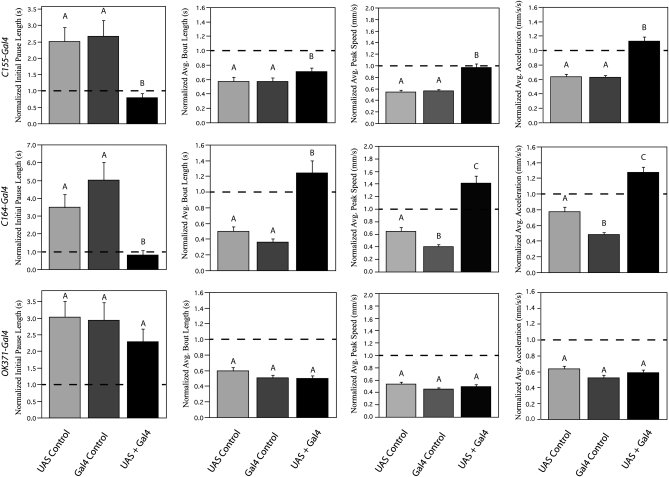Figure 6.—
Locomotor deficits can be rescued by expression of CASK-β in neurons. CASK-β cDNA was expressed in the nervous system using the UAS/Gal4 system. Data from all experimental genotypes are normalized to performance of control flies, and four representative parameters per rescue experiment are shown. Dashed lines represent control fly performance, which is always 1.0 due to normalization. For all parameters, the UAS and GAL4 controls each have one copy of the respective transgene (either UAS-CASK-β or a Gal4 driver) in a homozygous CASK-β null background. The UAS+Gal4 condition implies that flies contain one copy of both UAS-CASK-β and Gal4 driver, all in a homozygous CASK-β null background. (Top row) Pan-neuronal expression with the weakly expressing C155-Gal4 driver either rescues or partially rescues all parameters compared to both the UAS and Gal4 controls. (Middle row) Spatially restricted expression in the motor neurons and subsets of the brain with the strongly expressing driver C164-Gal4 rescues behavior in all four parameters, and in many conditions even enhances locomotor behavior beyond wild-type levels. (Bottom row) Specific expression in glutamatergic cells with the strongly expressing driver OK371-Gal4, however, did not rescue behavior in any of the parameters tested. Letters signify significant differences between groups (P < 0.05).

